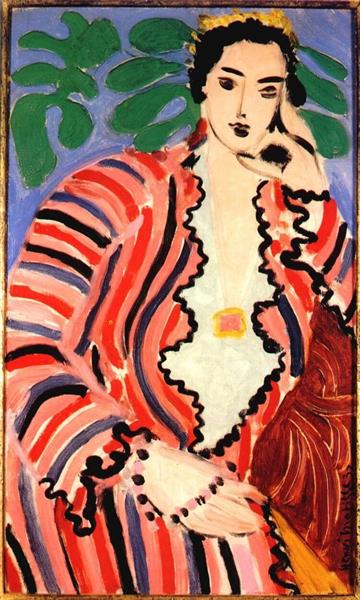Description
Henri Matisse, one of the leading exponents of Fauvism, offers us in “Helene” (1937) a refined example of his mastery in the use of color and form. This modestly sized work, 36x60 cm, captures the essence of his bold and free approach to painting, one that challenges traditional conventions to focus on emotional evocation through tones and lines.
The first feature that catches the viewer's eye when contemplating “Helene” is the way Matisse employs color. Instead of seeking chromatic fidelity to reality, the artist uses a vibrant and contrasting palette that gives the work a unique expressive force. The dominant colors are reds and greens, which combine in a harmonious yet visually tense dance. Helene's face, serene and at the same time imposing, is bathed in a bold application of warm and cool tones that highlight her features with an almost dreamlike softness.
The artistic composition of “Helene” is equally worthy of analysis. Matisse seems to play with the two-dimensional flatness of the canvas, challenging traditional depth to offer instead a more immediate and sensory experience. The way Helene's hair and neck intertwine with the background highlights Matisse's technique of blurring the distinction between figure and background, creating a pictorial cohesion that is both a testament to his technical skill and his innovative vision.
It is impossible to talk about a work by Matisse without mentioning his line, that exquisite handling of the line that not only defines but also insinuates. In “Helene,” the lines are fluid and confident, precisely delineating the character's contours but without excessive detail. This minimalist approach enhances the overall expressiveness of the work, focusing on sensations and emotions rather than mere figurative representation.
Another intriguing aspect of this painting is the way Matisse reconciles the personal and the universal. Despite being a specific portrait—evidently of a woman named Helene—the abstraction in the composition allows the work to transcend its original model. Helene is not just a woman; she is an amalgam of emotions and feelings that the viewer can interpret in multiple ways, depending on their own perspective and mood.
Henri Matisse, throughout his career, showed himself as an artist in perpetual evolution, imperatively innovative but consistent in his quest for purity and freedom in art. “Helene” fits within that paradigm, showing in every stroke and every chromatic nuance a commitment to beauty and emotional authenticity. The work not only represents its model but also encapsulates the very essence of Matisse's style, a style that revolutionized modern art and that still today continues to move and provoke deep reflection in those who have the privilege of contemplating his work.
In summary, “Helene” is much more than a portrait; it is a window into the soul of an artist who knew like few others how to explore the expressive possibilities of painting. Through his bold choices of color, composition, and line, Matisse invites us to an intimate and direct dialogue with the very essence of the human condition.

